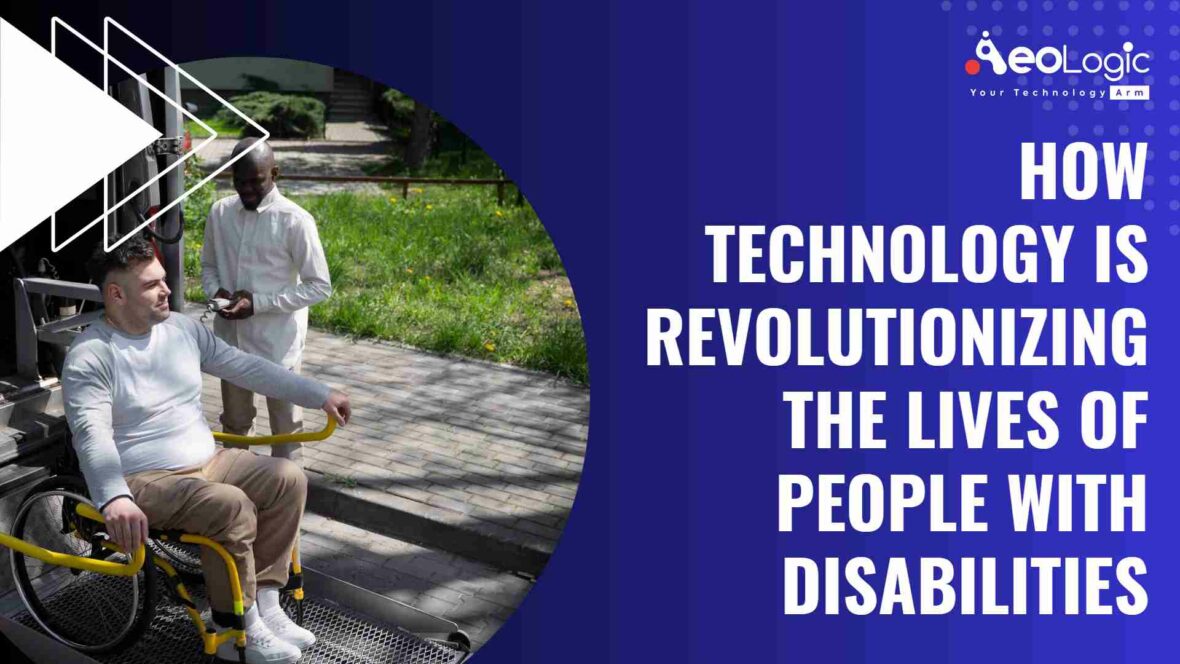Technology has been revolutionizing the world in a myriad of ways. In recent years, it has become increasingly apparent that technology can have a positive impact on the lives of people with disabilities. From assistive devices to smart home technology, advancements in technology have opened up new possibilities for individuals with disabilities, allowing them to live more independently, improve their quality of life, and participate more fully in society. Let’s see how technology is revolutionizing the lives of people with disabilities.
Assistive Technology
Assistive technology is one of the most significant ways that technology has revolutionized the lives of people with disabilities. These devices can range from simple tools such as hearing aids to more complex devices such as speech recognition software or prosthetic limbs. According to the World Health Organization, more than one billion people worldwide have a disability, and approximately 15% of the global population lives with a disability. Assistive technology can provide these individuals with greater independence and improve their quality of life.
Types of Assistive Technology
| Type of Assistive Technology | Examples |
|---|---|
| Mobility Aids | Wheelchairs, prosthetic limbs |
| Communication Aids | Augmentative and alternative communication devices |
| Hearing Aids | Cochlear implants, hearing aids |
| Vision Aids | Screen readers, magnification software |
| Cognitive Aids | Reminder devices, task organizers |
Also Read: Top Technology Solutions for Small Business in 2023
Smart Home Technology
Smart home technology is another area where technology has had a significant impact on the lives of people with disabilities. Technology devices such as smart thermostats, lighting systems, and security systems can be controlled remotely or via voice commands, making it easier for individuals with disabilities to manage their homes. For example, an individual with a mobility impairment can turn on the lights, adjust the thermostat, or lock the doors without having to get up from their seat.
Benefits of Smart Home Technology
- Greater independence.
- Improved safety and security.
- Energy efficiency.
- Remote monitoring and control.
- Increased accessibility.
According to a report by Grand View Research, the global assistive technology market size was valued at USD 26.4 billion in 2020 and is expected to grow at a compound annual growth rate (CAGR) of 7.5% from 2021 to 2028.
Additionally, a survey conducted by Pew Research Center found that 51% of adults in the United States who have a disability use the internet, and 31% of adults with disabilities use smartphones.
Adaptive Sports
Another way that technology is revolutionizing the lives of people with disabilities is through adaptive sports. Advances in technology have made it possible for individuals with disabilities to participate in sports and activities that were once inaccessible to them. For example, the use of prosthetic limbs or specialized equipment has allowed individuals with amputations or spinal cord injuries to participate in activities such as skiing, snowboarding, and surfing.
Advantages of Adaptive Sports
- Improved physical fitness and health
- Increased self-esteem and confidence
- Socialization and community engagement
- Opportunities for competition and achievement
- Overcoming perceived limitations and stereotypes
Also Read: The Role of Technology in Sustainable Development
Virtual and Augmented Reality
Virtual and augmented reality technology is another area where technology is making a significant impact on the lives of people with disabilities. These technologies can be used for educational and therapeutic purposes, allowing individuals to explore new environments and experiences in a safe and controlled setting. For example, virtual reality can be used to help individuals with phobias overcome their fears by exposing them to simulated environments in a controlled setting.
Applications of Virtual and Augmented Reality
- Education and training
- Therapy and rehabilitation
- Entertainment and recreation
- Accessible tourism and travel
- Socialization and community engagement
According to a report by Zion Market Research, the global adaptive sports equipment market size was valued at USD 949.9 million in 2020 and is expected to reach USD 1.4 billion by 2028, growing at a CAGR of 5.3% from 2021 to 2028.
Additionally, a survey conducted by the National Center for Health Statistics found that approximately 41 million adults in the United States have a disability, which represents approximately 12.8% of the adult population.
Also Read: The Role of Technology in the Sports Industry
Final Thought
Technology is revolutionizing the lives of people with disabilities in a variety of ways. Assistive technology, smart home technology, adaptive sports, and virtual and augmented reality are just a few examples of how technology is improving the lives of individuals with disabilities. As technology continues to evolve, we can expect to see even more innovations that will make a positive impact on the lives of people with disabilities, allowing them to live more independently, improve their quality of life, and participate more fully in society.
Do you have a story to share?
Get in touch by emailing support@aeologic.com






